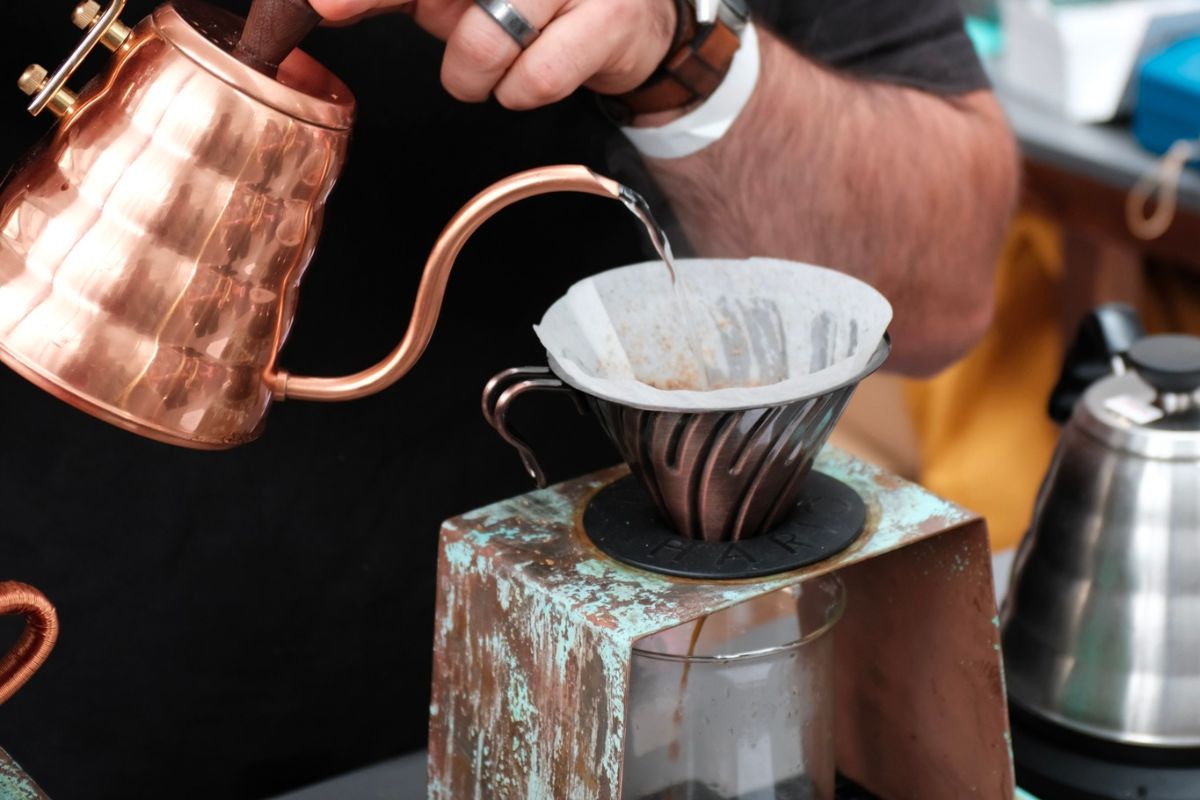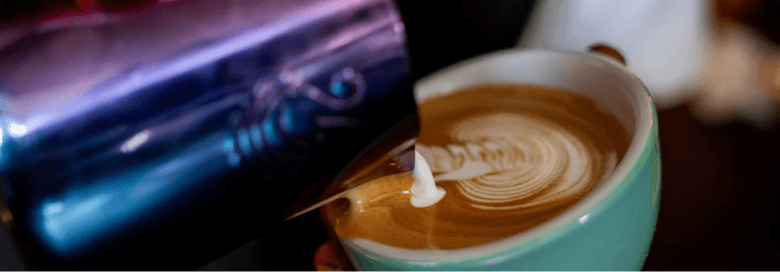Does coffee have different levels of caffeine?

The caffeine content in your coffee isn't always consistent. Find out why.
The good news is that you’re not imagining things. Caffeine levels in coffee can and do differ drastically. We’re discussing the biggest factors that influence the potency of caffeine in your brew.
Understanding caffeine - explaining the science behind the buzz
Let’s start with the science behind caffeine. It's something we might drink every day - but what is it?
Often described as a ‘compound’, ‘molecule’, ‘drug’ or ‘chemical’ - caffeine is a naturally occurring stimulant found in nature. It’s present in different quantities within the seeds, leaves, and fruits of various plants (things like tea bushes, cacao trees and, of course, coffee beans).
When you drink it, this is what caffeine does to your body:
- As soon as you have a sip, caffeine gets to work affecting your central nervous system - warding off drowsiness and boosting alertness
- It does this by competing with a neurotransmitter in the brain called ‘adenosine’
- Adenosine is the thing that nudges us towards the need to rest or sleep and - interestingly - caffeine's molecular structure is really similar to that of adenosine
- By having this similar structure, caffeine is able to bind to your adenosine receptors and block their activity
- With adenosine suppressed, the brain's natural stimulants, dopamine and glutamate, are free to run wild (like taking the lead off a pair of enthusiastic pups)
- For most people, this is the essence of a caffeine buzz - increased alertness and reduced feelings of fatigue

What influences the caffeine level in your coffee?
First of all - there’s no universal certainty on the caffeine content in coffee. But what we do know, is that certain factors can and do determine it’s levels, including:
- Bean variety
- Roast level
- Brewing method
Each can lead to variability in caffeine levels in a flat white, or other coffee drinks.
Bean variety: the caffeine content in coffee beans is influenced by the altitude at which they're grown. Generally, beans grown at lower altitudes have higher caffeine levels since these plants produce more caffeine to ward off insects and other predators. On the other hand, beans grown at higher altitudes face fewer threats and so produce less caffeine. However, there will always be variations in caffeine content, even within single-origin beans, as it is a naturally occurring compound.
Roast Level: The roast level of coffee beans can also influence the caffeine content of your brew. When coffee beans are roasted, they lose moisture, causing the beans to become lighter in weight. Contrary to popular belief, lighter roasts actually contain slightly more caffeine than darker roasts. This is because the roasting process breaks down some of the caffeine content in the beans. However, the difference in caffeine levels between light and dark roasts is relatively small and may not be noticeable for most people.
Brewing Method: The way you brew your coffee can have a significant impact on the amount of caffeine in your cup. Different brewing methods extract caffeine from the coffee grounds at varying rates, leading to differences in the final caffeine content. Here are some popular brewing methods and how they relate to caffeine levels.
- Drip or Filter Coffee: drip coffee makers typically produce a moderate amount of caffeine due to the extended contact time between water and coffee grounds.
- Espresso: made using high pressure and a short extraction time, espresso shots have a higher concentration of caffeine per ounce compared to drip coffee. However, because espresso servings are smaller, the total caffeine content might be similar or even lower than a cup of drip coffee.
- Cafetiere or French Press: a brewing method that typically results in a stronger and bolder coffee, with a slightly higher caffeine content than drip coffee. The extended steeping time and full immersion of the coffee grounds in water contribute to the increased caffeine extraction.
- Cold Brew: since cold brew coffee is made by steeping coffee grounds in cold water for an extended period (usually 12-24 hours), it tends to have a higher caffeine content than drip coffee. However, caffeine levels in cold brew can vary depending on the coffee-to-water ratio and steeping time.
…Or Is it just me? Understanding personal sensitivity to coffee
Individual sensitivity to caffeine is definitely a real thing.
We've all encountered that person who can consume 3 cups of coffee without batting an eye, while others have to practice deep breathing techniques after a single sip.
Heightened sensitivity to coffee can again be tied back to how caffeine interacts with adenosine in our brain. Simply put - some people are just more genetically predisposed to have a stronger reaction to caffeine's interference with adenosine receptors (scroll up to our definition of caffeine if you're not sure what we're talking about).
If this is you, we recommend opting for a really good decaf blend. Pick something that doesn’t compromise on that delicious coffee taste, but also cancels out any unwanted effects that come with caffeine so that ‘ahh coffee’ never feels like ‘agh coffee’.
You might even invest in experimenting with different bean varieties, roast levels, and brewing methods to help you find the perfect caffeine balance for your taste buds and body.
If you find the sciency part of caffeine interesting - read more about what caffeine does to the brain. It's fascinating.
FAQs on the Caffeine Content in Coffee
How much caffeine is in a standard coffee?
Breaking it down: the amount of caffeine in a single shot of espresso is determined by dose (the amount of ground coffee), extraction time (how long it takes to come out of the machine), flow rate (how fast it comes out of the machine) and extraction temperature. The actual size of the coffee grounds even plays a small role, as does the quality of the bean.
If we are talking numbers, caffeine is typically measured in milligrams (mg). Generally speaking, the following popular coffee drinks have the following amounts of caffeine:
Which coffee is strongest?
As we mentioned - the strength of coffee is influenced by factors like bean variety, roast level, and brewing method. Generally, espresso-based drinks like Americanos and lattes have a higher caffeine concentration than drip coffee, while lighter roasts tend to have slightly more caffeine than darker roasts.
Caffeine levels in high-street coffee: which brand of coffee has the most caffeine?
It's difficult to accurately compare caffeine levels in coffee from different brands due to the numerous variables involved.
You might have noticed that energy drinks brands have different levels of caffeine displayed on their nutrition labels. This is because they have a standarised formula (and a lot of the time, the caffeine is synthetic). If there was a reliable way of doing it - coffee shops might put the caffeine content next to each drink but because of the numerous variables - this would be too misleading.
Some studies have attempted to compare the caffeine content in Starbucks coffee vs Costa, for example, but it's important to take these findings with a pinch of salt. There's no universal certainty on coffee content, so it's best to focus on finding a coffee that suits your personal taste and caffeine tolerance.
